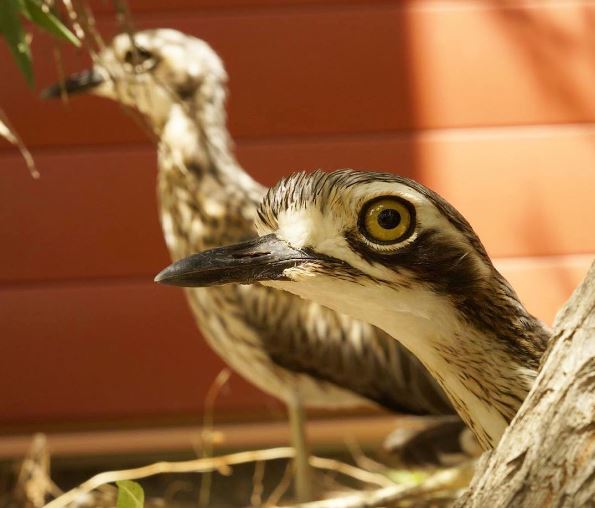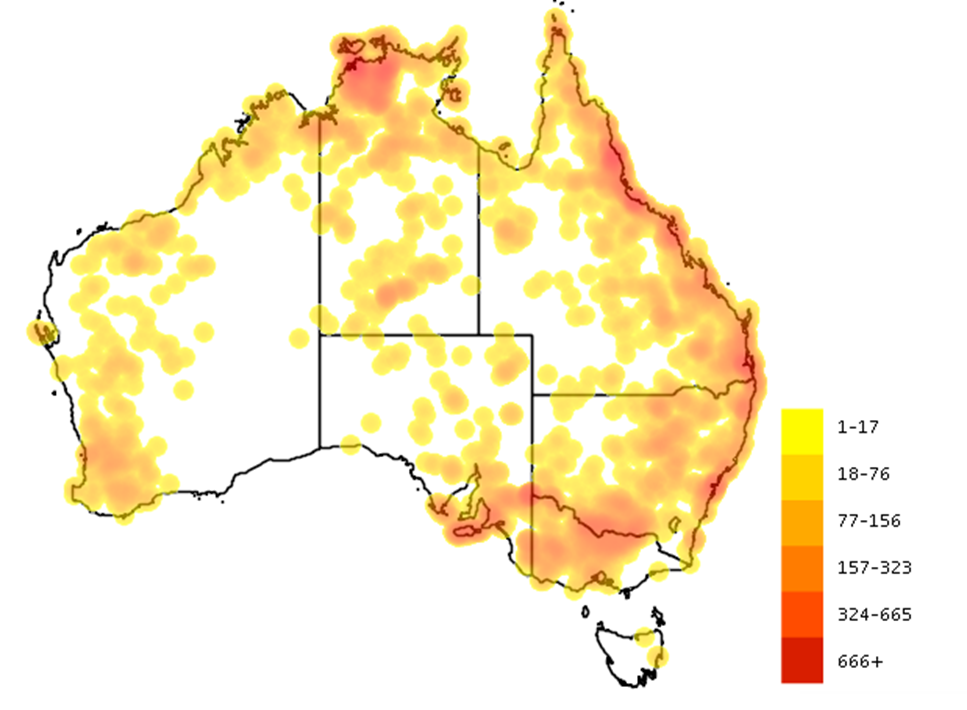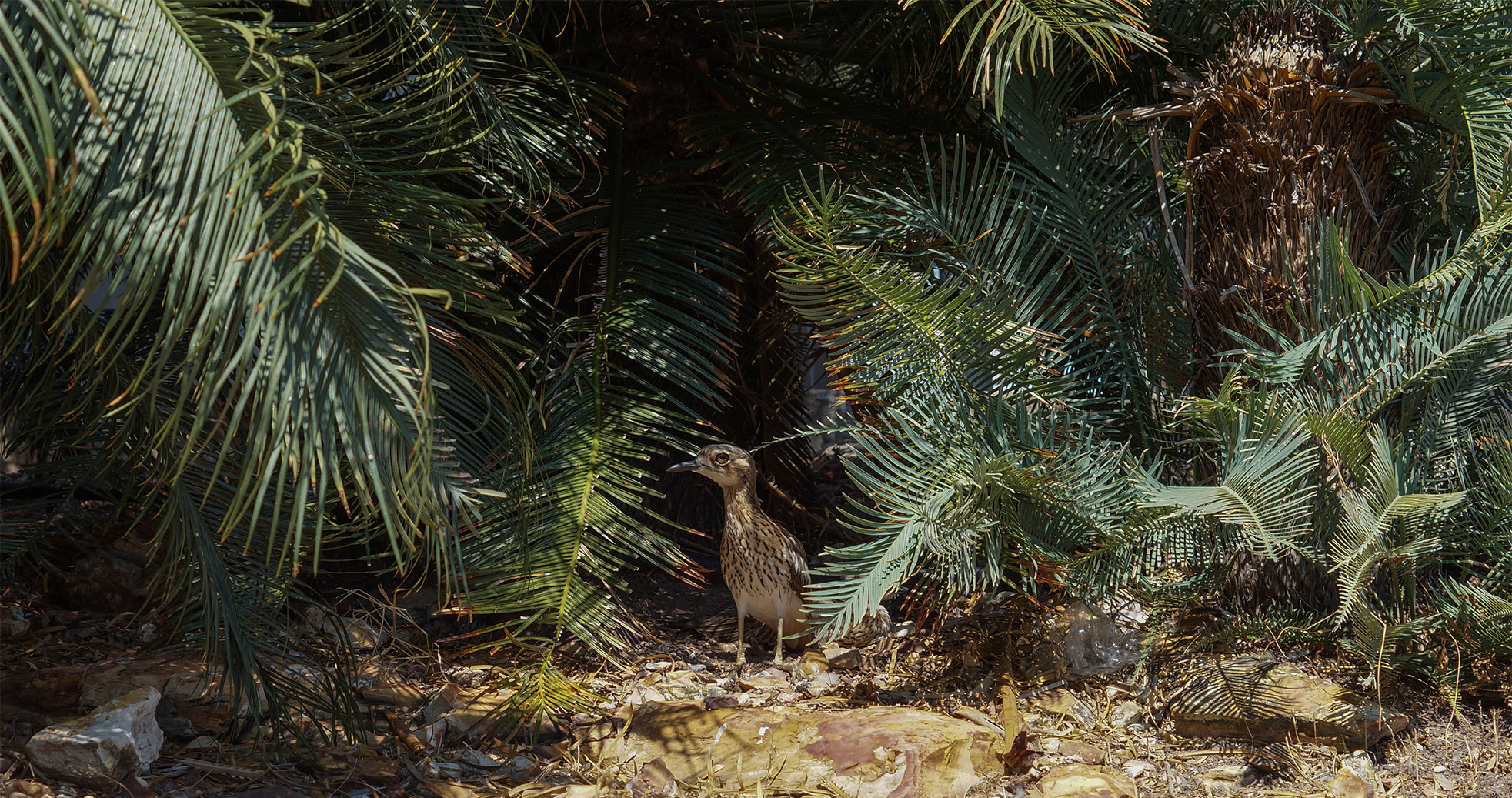Behaviour
Call
A drawn-out, mournful "wer-loooo", often heard at dusk and at night..
Diet
It eats insects and other arthropods, molluscs, small lizards, seeds and occasionally small mammals, which are taken from the ground at night.
Movement
Usually sedentary, with some local movements when not breeding.
Breeding
One to three eggs are laid in a shallow scrape in the ground or on a small bare batch. Both adults incubate the eggs and care for the young. As a prelude to breeding, the species performs a courtship dance where multiple birds stand facing one another, bobbing and bowing to one another, then following one another about in a crouched posture.
Field Guide
Improve your identification skills. Download your Bush Stone-Curlew field guide here!





